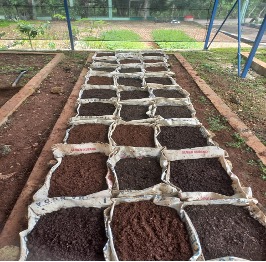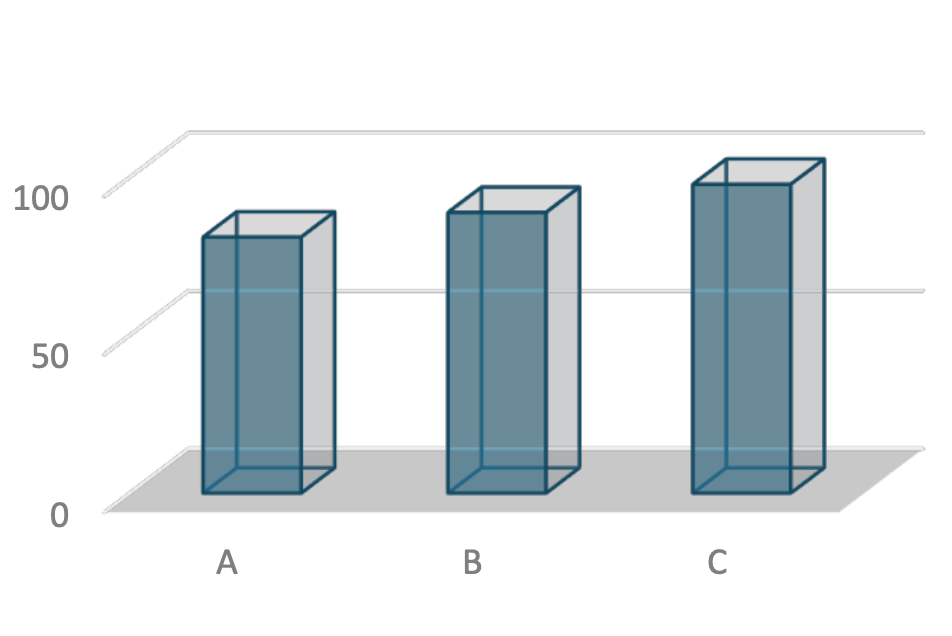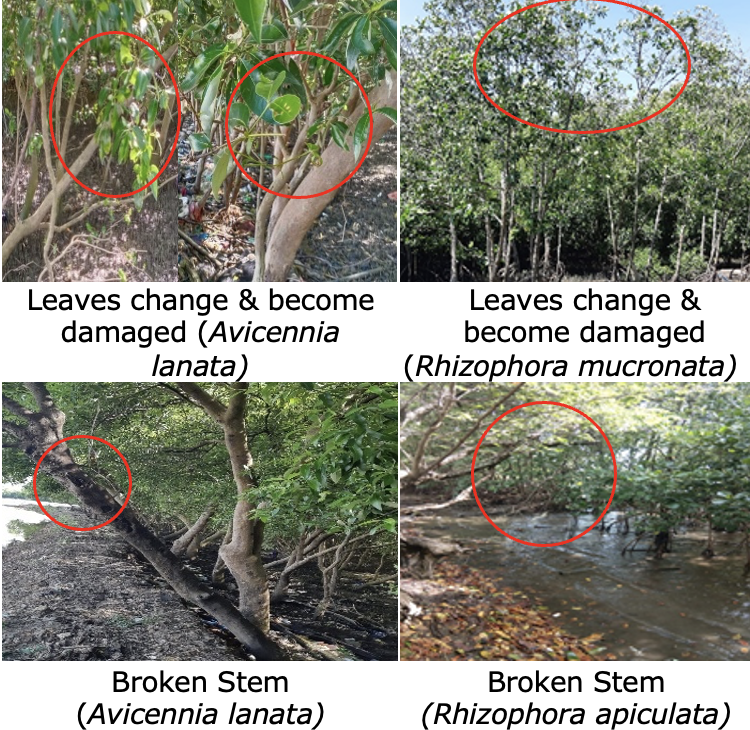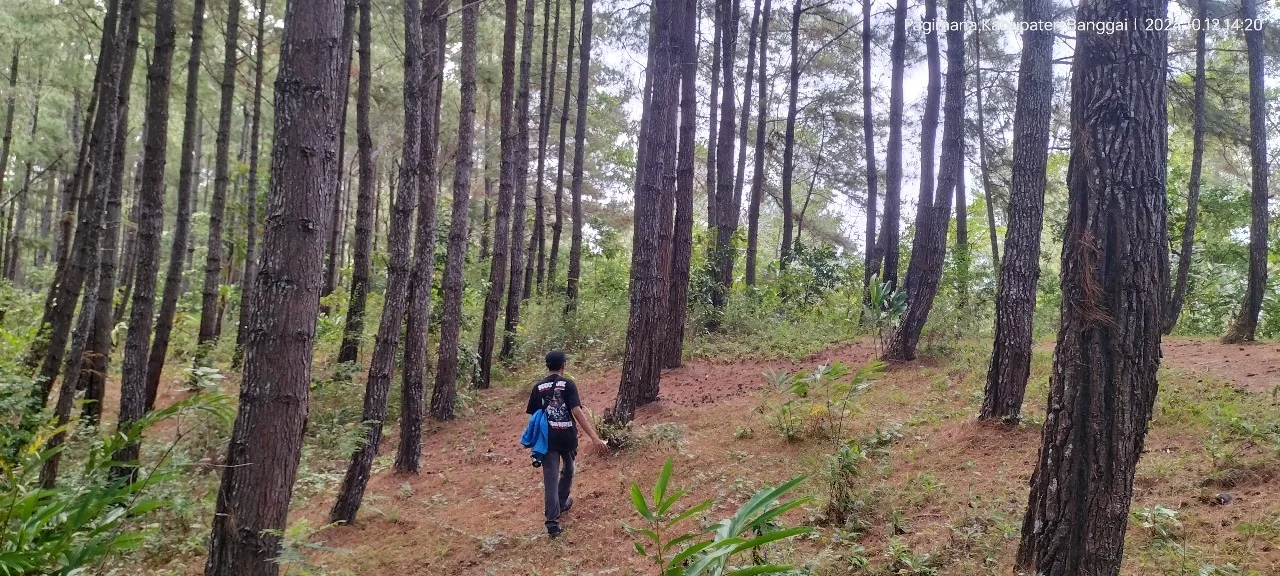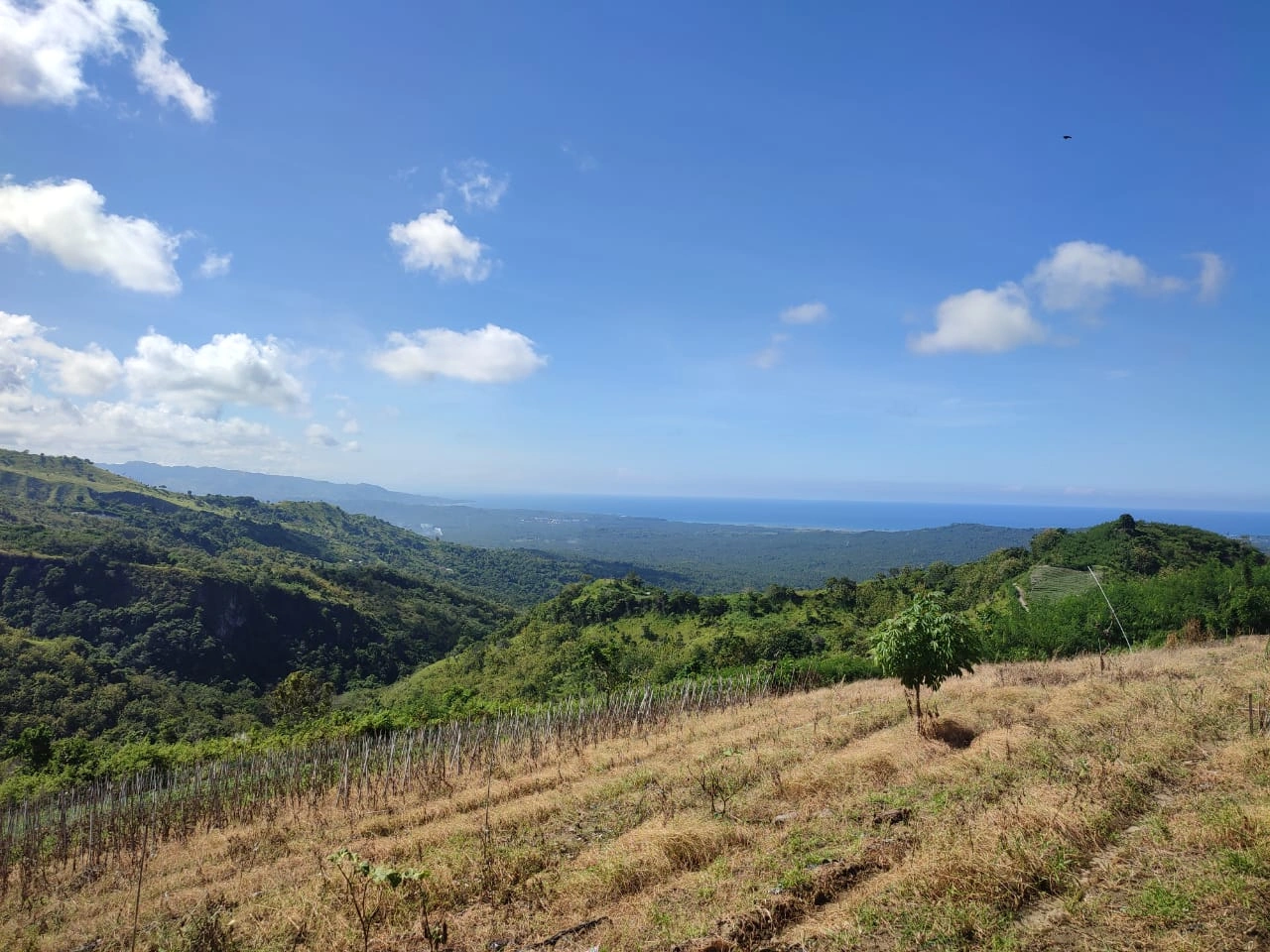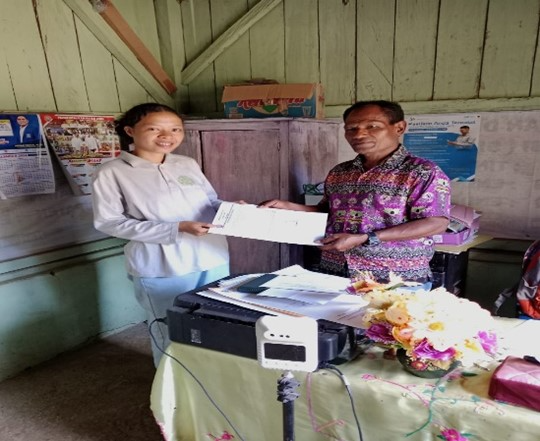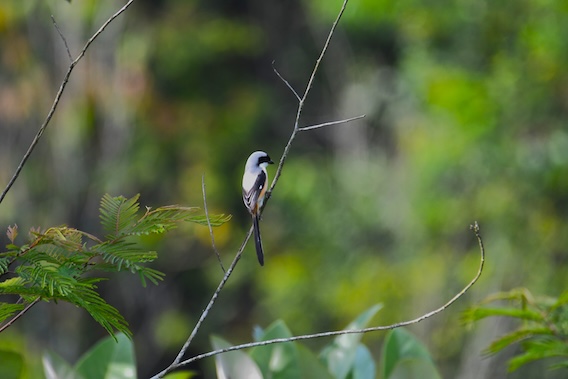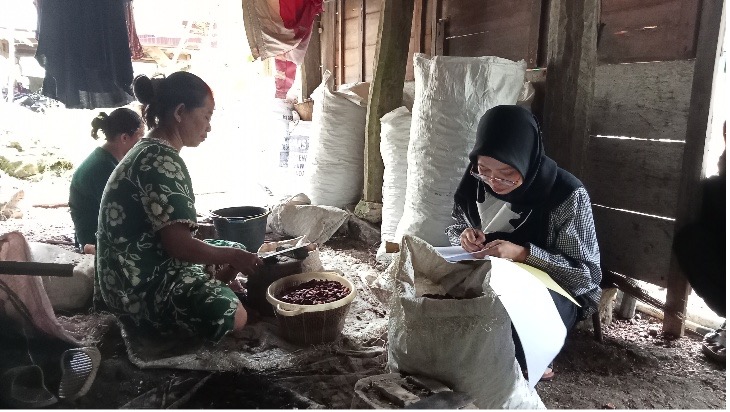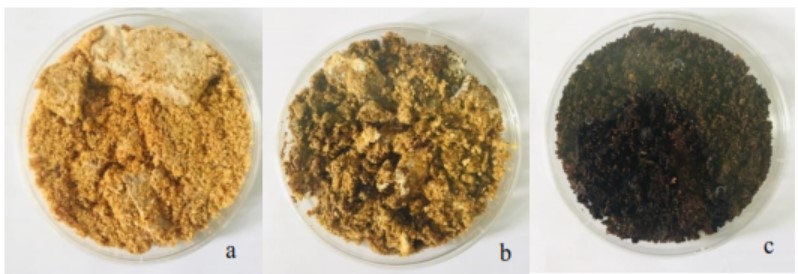Optimising Growing Media Composition and Seed Selection Strategies For the Conversation of the Endangered Sandalwood (Santalum album Linn.)
Abstract
Overexploitation and insufficient conservation efforts have classified Sandalwood (Santalum album Linn.), an economically and ecologically significant species, as endangered. This study investigates the effects of seed size and growing media composition on the germination performance and growth of sandalwood seedlings, aiming to optimise seed selection and media composition strategies for its conservation. We employed a completely randomised design (CRD) experiment, which included three seed size categories (small, medium, and control) and three media compositions: soil and sand alone, soil and sand with chicken manure, and soil and sand with cow manure. Results revealed that the combination of medium-sized seeds and chicken manure (A2B1) yielded the highest fresh weight (0.31 g), while small seeds combined with chicken manure (A1B1) achieved the highest germination speed index (0.63%/day), germination value (0.07%/day), and dry weight (0.07 g). We identified chicken manure as the most effective organic amendment, enhancing soil structure, microbial activity, and nutrient availability. In contrast, cow manure exhibited slower nutrient release, and soil and sand alone hindered root development due to compact soil properties. These findings underscore the importance of nutrient-rich organic amendments and optimal seed selection in enhancing sandalwood germination and growth. This study provides actionable insights for sustainable sandalwood cultivation and conservation efforts. Further research should focus on field trials under variable environmental conditions to validate these strategies on a larger scale.
1. Introduction
Sandalwood (Santalum album Linn.) is a valuable forest plant native to East Nusa Tenggara (NTT), Indonesia. As an endemic species, sandalwood holds great economic importance and is uniquely found in specific areas. The wood is renowned for its quality and versatility, being processed into high-grade heartwood, handicrafts, and artisanal objects. The trunk and roots of sandalwood produce a fragrant aroma, making them a prime source of essential oils widely utilised in the pharmaceutical and cosmetic industries. Beyond oil extraction, sandalwood is extensively used in creating various handicrafts (Kumar et al., 2022).
According to the 2013 agricultural census, 8,064 households in NTT cultivate sandalwood, with a population of 250,617 plants. Data from the Central Statistics Agency (BPS) indicate that sandalwood production in NTT from 2016 to 2018 amounted to 699.36 plants. However, the International Union for Conservation of Nature (IUCN) categorised Santalum album as Vulnerable in 2018, signifying its risk of extinction due to overexploitation and insufficient conservation efforts.
Propagation of sandalwood (Santalum album Linn.) in NTT has been widely implemented through nurseries and the maintenance of seedlings from natural distributions. Studies have emphasised the need for effective propagation strategies to ensure sustainable cultivation. According to Wirayanta (2003), providing essential nutrients, particularly through manure application, can significantly enhance sandalwood production. This study utilised cow and chicken manure, both of which have distinct benefits. Cow manure increases soil nutrient availability and enhances water absorption due to its high cellulose content (Hartatik et al., 2015). Conversely, chicken manure improves soil structure and compensates for deficiencies in organic nutrients, thus promoting plant growth.
Seed viability and vigor are critical factors in sandalwood propagation. According to Schmidt (2002) in Suita & Megawati (2009), seed size often correlates with these attributes, with heavier seeds typically exhibiting better germination and seedling development. Similarly, Sorensen and Campbell (1993) suggest that larger seeds are preferred for their superior germination speed and robust growth. Surata (2006) identified optimal criteria for sandalwood seeds, recommending the use of large, healthy seeds with diameters ranging from 0.5 to 0.8 cm.
2. Method
This study was conducted at the Fatukoa Permanent Nursery, BPDAS Benain Noelmina, located in Fatukoa Village, Maulafa District, Kupang City, East Nusa Tenggara. It lasted three months, from March to May 2024. The materials used in this study included sandalwood seeds, soil, sand, chicken manure, and cow manure. Additional tools and materials included germination tubs, labels, plastic bags, calipers, and analytical scales.
1) Research Procedure
a. Seed Procedure
The seeds used in this study were collected from certified sources to ensure quality and reliability.
b. Media Procedure
Before preparing the planting media, chicken manure and cow manure were dried under the sun for 24 hours. Once the planting bed was ready, the planting media were mixed in three levels: B0, B1, and B2. Prior to mixing, the soil media were analysed in the Undana Faperta Laboratory to determine the nutrient content, including nitrogen (N), phosphorus (P), potassium (K), and organic carbon (C) (Yulianti et al., 2016).
c. Seed Soaking
Sandalwood seeds were soaked for 12 hours in three separate containers. After soaking, the seeds were dried before proceeding to the next stage of the process.
d. Seed Sowing Procedure
The sandalwood seeds (Santalum album Linn.) were sown in 57 x 57 cm germination tanks. The base layer of the tank was evenly sprinkled with a mixture of cow manure, chicken manure, and soil in a 3:3:3 ratio. The second layer was evenly covered with sand. Sandalwood seeds were then placed according to their size, maintaining a spacing of 1 cm between seeds and sowing them at a depth of 1 cm. The final layer was covered with sand. This sowing process was applied for control, small, and medium-sized seeds. The germination of sandalwood seeds was carried out over approximately one month.
e. Maintenance
Maintenance activities included watering the seeds twice daily, in the morning and evening, and manual weeding. Weeds surrounding the sandalwood sprouts (Santalum album Linn.) were removed to ensure optimal growth conditions.
2) Research Design
This study utilised a completely randomised design (CRD) experiment, consisting of two factors: seed size and planting media.
Factor 1: Sandalwood seed size, comprising three level.
A0 = Control (0,5-0,8 cm)
A1 = Small seed size (0,2-0,3 cm)
A2 = Medium seed size (04-0,5 cm)
Factor 2: Planting media composition, based on the ratios used by Ello et al. (2019):
BO = Sand 3 kg + Soil 3 kg (control)
B1 = Sand 2 kg + Soil 2 kg + Chicken manure 2 kg B2 = Sand 2 kg + Soil 2 kg + Cow manuere 2 kg
This resulted in 9 treatment combinations, each repeated 3 times, yielding 27 experimental units (3 × 3 × 3). Each experimental unit contained 50 sandalwood seeds, bringing the total number of seeds to 1,350. The combination of treatments for seed size and planting media is illustrated in the following table:
Table 1. Seed size and planting media combinations

3) Measured Parameters
a. Germination Capacity
Germination capacity was determined based on the percentage of normal seeds, where the primary root was sufficiently strong under specific environmental conditions within a designated time period.
\[ \scriptsize \textbf{DB}(\%) = \frac{\sum KN1 + \sum KN2}{\sum \textit{Seeds Planted}} \times 100\% \]
b. Germination speed index
The Germination Speed Indeks (GSI) was calculated through daily observation of the percentage of seeds germinating normally.
\[ \scriptsize \textbf{KB} = \frac{G_1}{D_1} + \frac{G_2}{D_2} + \frac{G_3}{D_3} + \cdots + \frac{G_n}{D_n} \]
c. Germination value
The Germination Value (GV) was calculated as the product of the peak value and the mean daily germination rate:
\[ \scriptsize \textbf{NP} = PV \times MDG \]
Where:
PV = %Germination at time (T) / Time (days) to reach it
MDG = %Germination at G / Total tests
d. Fresh Weight
Fresh plant weight was measured using an analytical balance while the plant was still in fresh condition. Measurements were taken at the end of the study (Surata, 2006).
e. Dry Weight
For dry weight, the plants were oven-dried at 80°C for approximately 8 hours before being weighed. Measurements were also taken at the end of the study (Surata, 2006).
4) Data Analysis
Data on germination capacity, germination speed, germination value, total fresh weight, and total dry weight were analysed using a completely randomised design (CRD). The treatment factors were the seed sizes (A0, A1, A2). If significant effects were found, further analysis was conducted using Duncan's Multiple Range Test (DMRT) to determine significant differences between treatments.
3. Result and Discussion
1) Soil Analysis
The results of the initial and final soil analyses include measurements of organic carbon (C-Organic), total nitrogen (N-Total), phosphorus (P₂O₅, ppm), and potassium (K, me/100g). These parameters were evaluated to assess the changes in soil nutrient content before and after the application of the different treatments (Abduh et al., 2024).
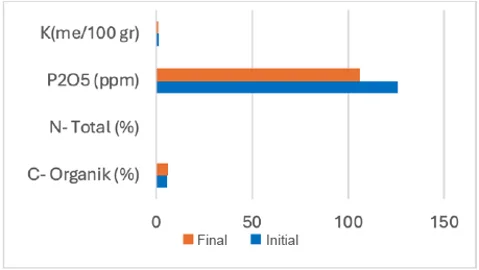
Figure 1. Initial and final soil analysis
a. C-Organik
The initial and final soil analysis graphs show that the C-organic content in the final soil increased rather than decreased. This increase indicates that carbon accumulation in the soil is enhanced by a high correlation between the land's condition and the slow decomposition process due to low temperatures. This results in the accumulation of C-organic in the soil (Purnamasari et al., 2024).
b. N-Total
The graphs for the initial and final soil analyses reveal that the N content in the final soil decreased. This decline is attributed to the ease with which soil nitrogen dissipates into the atmosphere in the form of ammonia, leading to a lower nitrogen value in the soil. This finding aligns with Agustin et al. (2019), who noted that N-Total content is influenced by compost application. Compost serves as a carbon source that provides energy for soil microorganisms to break down nutrients and make them available to plants (Abel et al., 2021).
c. P2O5
The graphs indicate a reduction in P₂O₅ content in the final soil analysis. This decline is due to the natural loss of phosphorus through processes such as leaching. Yovita (2012) stated that phosphorus accumulation occurs during planting cycles because phosphorus does not dissolve easily in soil (Jayadi et al., 2022). Furthermore, research by Munawar (2011) suggests that high organic matter content in soil can influence phosphorus fixation through the formation of humic-phosphorus complexes. Organic matter can also reduce phosphorus fixation due to the production of organic acids and citrates during decomposition, as these anions compete with phosphate ions, thereby reducing phosphorus fixation (Jayadi et al., 2022).
d. K (Me/100g)
The graphs from the initial and final soil analyses show a decrease in potassium (K) content, with a difference of 0.22 me/100g. According to Herawati (2015), potassium ions are highly mobile and are easily lost from the soil through leaching. This occurs because potassium is not strongly retained by the soil surface (District et al., 2020).
2) Germination capacity
Germination capacity, or seed germination, measures a seed's ability to grow and develop normally under optimal environmental conditions. It is calculated by comparing the number of germinated seeds to the total number of seeds sown. The results of the germination capacity calculations are presented in Figure 2.
The highest germination percentage was observed in treatment A1B1, with a germination rate of 37.33%. The A1B1 treatment achieved the highest percentage due to the use of chicken manure, which contains essential nutrients required for plant growth, such as nitrogen (N), phosphorus (P), calcium (Ca), magnesium (Mg), and sulfur (S), as reported by Musnawar (Tufaila et al., 2014). Additionally, chicken manure improves soil fertility conditions, ensuring the availability of water, oxygen, and nutrients in sufficient quantities to support plant growth. This highlights the significant role of organic manure in enhancing soil fertility.
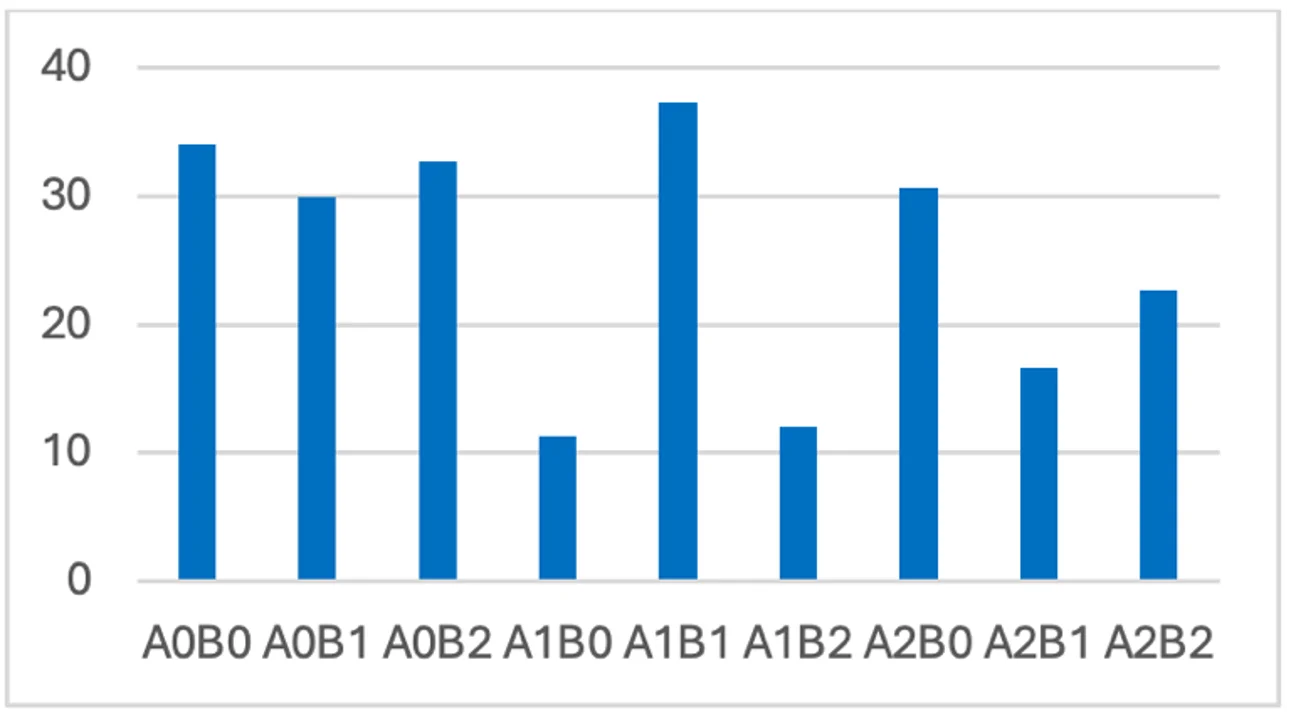
Figure 2. Germination capacity
In contrast, the treatment A1B0 resulted in the lowest germination percentage of 11.33%. This outcome is likely due to the use of small-sized seeds and a planting medium composed only of soil and sand. According to Hardyadi et al. (2006), certain seed types with larger sizes and weights generally have better physical and physiological quality compared to smaller seeds. Larger seeds tend to exhibit higher seed viability and vigor, leading to better germination rates and healthier seedlings.
Although both A1B1 and A1B0 treatments used small-sized seeds, the difference in germination capacity can be attributed to the variation in planting media. In A1B1, the use of chicken manure enhanced seed germination, while the planting medium in A1B0, which lacked organic matter, exhibited dense physical soil properties, making it less conducive to seed germination. Hartatik et al. (2015) noted that germination media composed solely of soil without organic matter exhibit poor physical characteristics, which adversely affect seed germination.
Table 2. Analysis of Variance (ANOVA) result for germination growth parameters of Sandalwood (Santalum album Linn.)

Based on Table 2, the calculated F-value is 21.204, with a significance level of 0.00. This indicates that the null hypothesis (H₀) is rejected, and the alternative hypothesis (H₁) is accepted, meaning the average of the treatments differs significantly. The results of the ANOVA demonstrate that the combination of seed size and planting media significantly affects the germination capacity of sandalwood (Santalum album Linn.).
This effect is attributed to the seed size and the composition of the planting media, which provided sufficient water, oxygen, and nutrients due to the inclusion of organic materials. According Pudjihartati & Endang (2022), germination media is a critical external factor influencing seed germination. Consequently, the planting media composition caused differences in germination capacity across treatments. Further analysis was conducted using Duncan’s Multiple Range Test (DMRT) at a 5% significance level.
From Table 3, the average germination capacity of sandalwood seeds for treatments A0B0 and A0B2 varied due to differences in planting media composition. This variation influenced growth outcomes. According to Anonim (2007), sandy soil is often chosen for planting media due to its excellent drainage properties, as sand creates large pore spaces in the media. Similarly, Taryana and Sugiarti (2020) noted that the best germination results occur in optimal germination media capable of providing adequate nutrients and water, which enhance plant growth (Heku et al., 2024).
The treatments A2B2 and A2B1 exhibited average values that were relatively similar despite differing planting media. This can be attributed to the use of cow manure as part of the media composition. Research by Raj et al. (2014) found that cow manure supports soil health by improving water infiltration, water-holding capacity, and cation exchange capacity. These characteristics make the soil healthier and more effective for increasing plant productivity (Sari & Fasta, 2021).
Table 3. Average germination capacity

Note: Means followed by the same letters within the column are not significantly different according to Duncan’s test
The treatment A1B0, with the lowest germination capacity at 11.33%, is likely due to the imbalance between seed size and planting media, leading to unstable germination and poor results. Germination media composed solely of soil, without the addition of organic matter, tends to have dense physical properties that are less conducive to seed germination (Hartatik et al., 2015). Treatment A0B0 showed a significant effect compared to A2B0, but no significant differences were observed with A0B2, A0B1, A2B2, A2B1, A1B0, A1B2, and A1B1.
3) Germination rate index
The highest Germination Speed Index (GSI) was observed in treatment A1B1, with a germination rate of 0.63%. This result is attributed to the use of germination media composed of soil mixed with chicken manure, which provides the essential nutrients and water needed for plant growth. According Mariana (2017), planting media serve as a growth medium for plants and perform several key functions, including water retention, nutrient supply, excess water regulation, soil aeration and circulation, and maintaining root moisture to prevent decay.
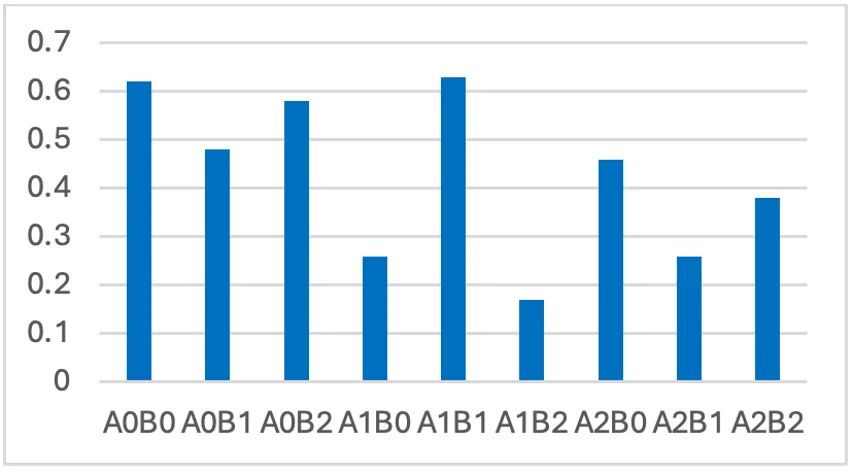
Figure 3. Germination speed index
Table 4. Analysis of Variance (ANOVA) Results for the Germination Speed Index of Sandalwood Seeds (Santalum album Linn.)

Conversely, the treatment A1B2 showed a lower GSI of 0.17%. This may be due to the use of cow manure, which is considered a "cold fertiliser." Such fertilisers undergo slow oxidation processes because air and water penetration is limited and often carry weeds (Tetelay, 2018).
Both treatments A1B1 and A1B2 utilised small-sized seeds with chicken manure and cow manure as planting media, respectively. However, chicken manure is known to contain a complete range of nutrients, including nitrogen (N), phosphorus (P), calcium (Ca), magnesium (Mg), and sulfur (S), all of which are essential for plant growth (Musnawar, as cited in Tufaila et al., 2014). Chicken manure also contributes higher nutrient levels compared to other types of manure, which supports optimal seedling development.
The data were analysed using ANOVA, as presented in Table 4. The F-value was 9.130, with a significance level of 0.00, indicating that the composition of the planting media significantly affected the germination speed index across treatments. As the treatments demonstrated significant differences, further analysis was conducted using Duncan’s Multiple Range Test (DMRT).
Based on Table 5, the average germination speed index (GSI) of sandalwood seeds differed across treatments due to variations in planting media and seed size. For example, treatments A0B0 and A0B1 exhibited differences in their germination rates due to the distinct compositions of the planting media. Widowati (2004), as cited in Bhoki and Jeksen (2021), reported that the decomposition process of organic chicken manure depends on its texture, as its solid particle-like form decomposes slowly. Consequently, plants may take longer to absorb nutrients, thereby delaying growth.
Similarly, treatments A0B2 and A1B0 demonstrated significant differences in their average GSI values, which can be attributed to variations in planting media and seed size. According to Prayugo (2007), an ideal planting medium must meet several criteria: it should provide a firm base for the plant, retain water, supply essential nutrients, manage excess water through proper drainage, maintain aeration and air availability, and preserve moisture around the roots without decaying or breaking down easily (Mariana, 2017).
Table 5. Average germination speed index

Note: Means followed by the same letters within the column are not significantly different according to Duncan’s test
Parnata (2010), as cited in Hafizah and Mukarramah (2017), further explained that cow manure contains high fibre levels, such as cellulose, which contributes to a high C/N ratio (>40). Cow manure also provides macronutrients, including nitrogen (0.5%), phosphorus (0.25%), potassium (0.5%), and essential micronutrients, although its slow decomposition process may limit nutrient availability.
In treatment A1B1, the highest GSI value (0.63) was observed, likely due to the nutrient-rich chicken manure used in the planting media. Chicken manure contains essential nutrients such as nitrogen (N), phosphorus (P), calcium (Ca), magnesium (Mg), and sulfur (S), which are crucial for plant growth (Tufaila et al., 2014). Additionally, chicken manure contributes higher nutrient levels than other organic fertilisers, which supports optimal seedling growth.
Conversely, treatment A1B2 recorded the lowest GSI value (0.16), which may be attributed to the use of cow manure. As a "cold fertiliser," cow manure undergoes a slower oxidation process due to limited air and water penetration, and it often carries weeds (Tetelay, 2018). This slower decomposition and potential contamination may hinder nutrient availability, negatively impacting seed germination.
4) Germination Value
The germination value calculations in this study indicated that seeds treated with a combination of small-sized seeds and chicken manure exhibited the highest germination performance, with an average value of 0.07%/day after planting. According to Hanafiah (2012), organic fertilisers physically improve soil structure, making it more crumbly and allowing roots to develop more freely, even in low nutrient conditions. Biologically, chicken manure enhances microbial activity in the soil, thereby improving soil fertility (Yusdian et al., 2018).
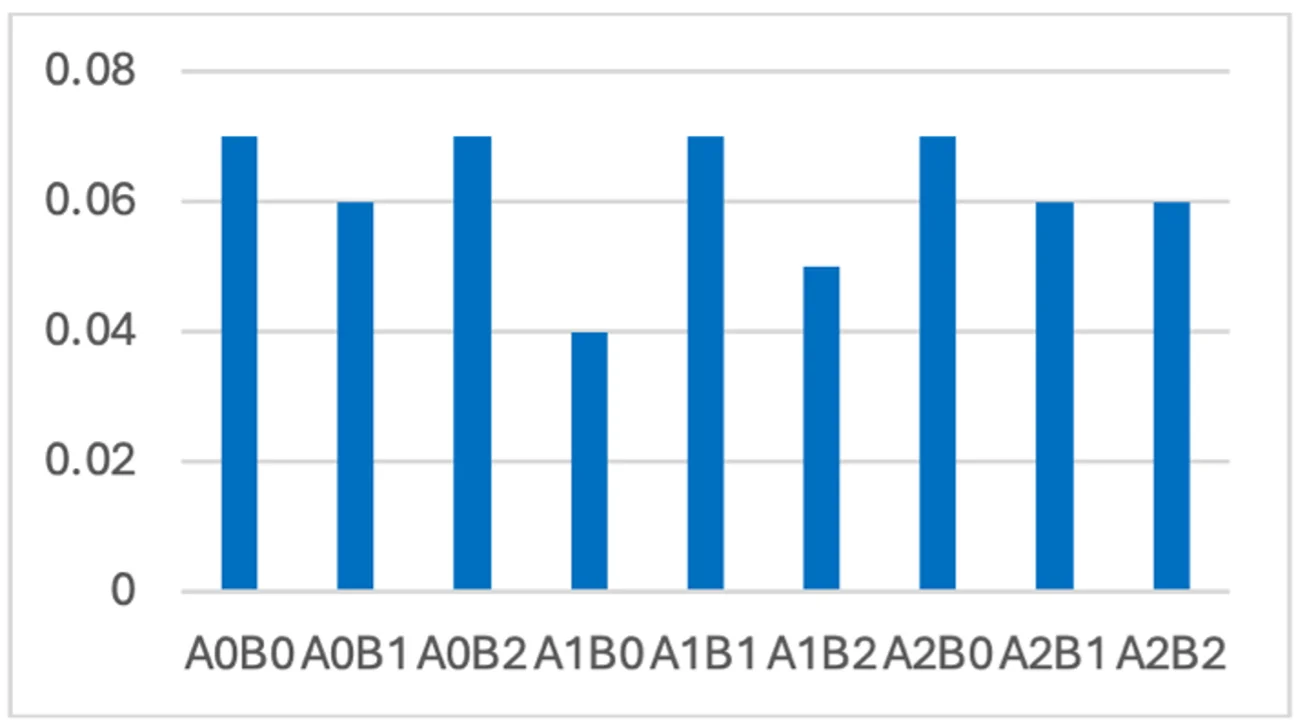
Figure 4. Germination value
Table 6. Analysis of Variance (ANOVA) Results for Germination Value of Sandalwood Seeds (Santalum album Linn.)

In contrast, treatment A1B0 had the lowest average germination value of 0.04%/day. This result is likely due to the germination media consisting only of soil, without the addition of organic matter, leading to compact soil properties that are not conducive to sandalwood (Santalum album Linn.) seed germination (Hartatik et al., 2015).
Table 7. Average Germination Value of Sandalwood Seeds at 12 Weeks After Planting (WAP)

Note: Means followed by the same letters within the column are not significantly different according to Duncan’s test
Both treatments A1B1 and A1B0 used small-sized seeds but differed in planting media. Treatment A1B1 incorporated chicken manure, whereas A1B0 used only soil and sand. According to Anonim (2003), sandy soil generally has low nutrient content and poor water retention, making it less suitable for plant cultivation (Oktaviani et al., 2017).
The data were analysed using ANOVA, as shown in Table 6. The calculated F-value was 1.889, with a significance level of 0.041, indicating that the composition of the planting media significantly affected the germination value. As a result, further analysis was conducted using Duncan’s Multiple Range Test (DMRT).
The highest germination value (0.07%/day) was observed in treatment A1B1, likely due to the use of chicken manure. According to Mubarok et al. (2016), chicken manure is an organic fertiliser rich in nitrogen, phosphorus, potassium, and calcium. Beyond supplying nutrients, chicken manure improves the physical and biological properties of soil, enhancing its fertility and promoting plant growth.
Conversely, treatment A1B0 had the lowest germination value (0.04%/day). This result can be attributed to the absence of organic fertilisers, as the germination media consisted solely of soil, resulting in compact physical properties that hinder seed germination. According to Taryana and Sugiarti (2020), dense soil without organic amendments negatively impacts germination due to reduced water retention, aeration, and nutrient availability.
5) Fresh weight (grams)
The plants’ fresh weight was measured at the end of the study using an analytical balance. Before weighing, the plants were carefully uprooted and soaked in water to remove any soil residues from the roots. The results of the fresh weight measurements are shown in Figure 5.
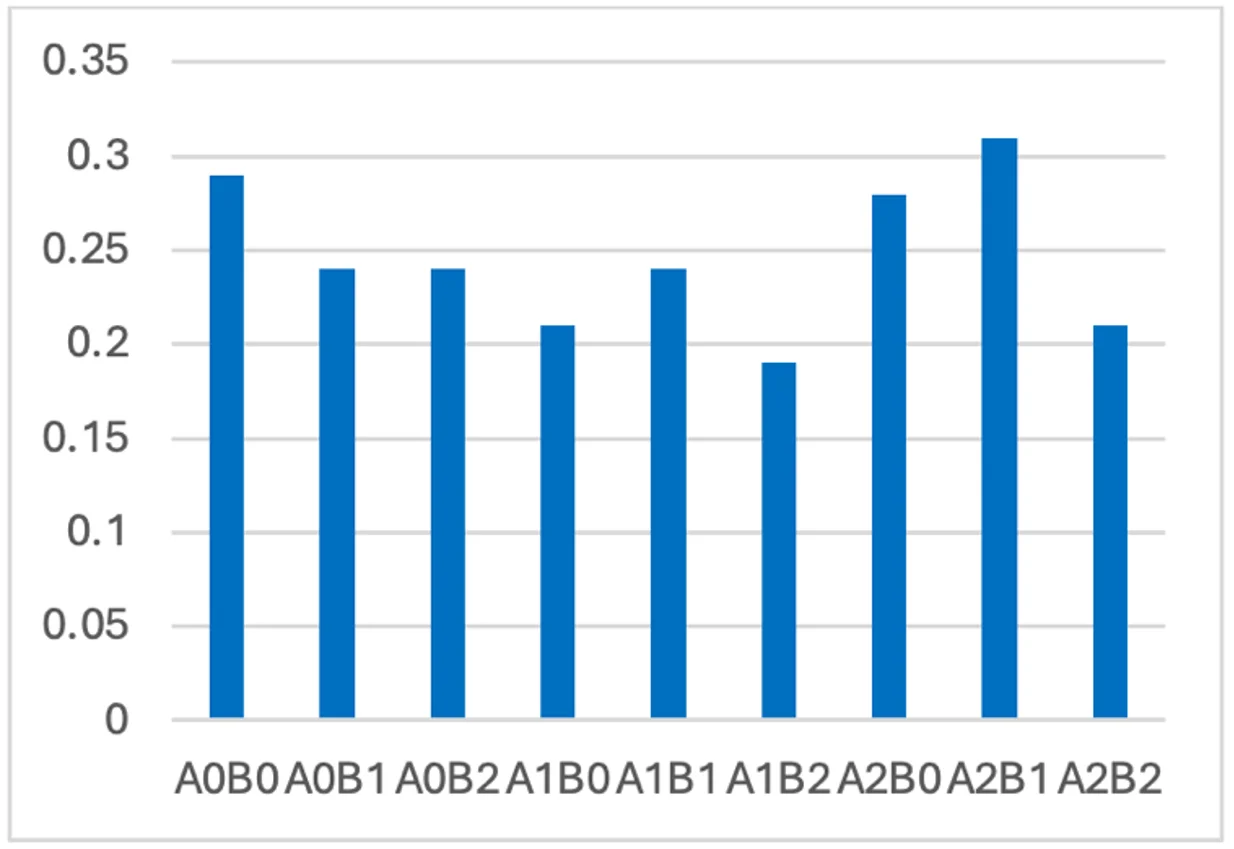
Figure 5. Fresh weight of plants
The fresh weight results indicated that seeds treated with A2B1 (medium-sized seeds + 2 kg soil + 2 kg sand + 2 kg chicken manure) had the highest average fresh weight of 0.31 grams. Conversely, seeds treated with A1B2 (small-sized seeds + 2 kg sand + 2 kg soil + 2 kg cow manure) exhibited the lowest average fresh weight at 0.19 grams. The higher fresh weight in A2B1 is attributed to the planting media's ability to improve soil structure, thereby enhancing water absorption and facilitating root development.
According to Hanafiah (2007), as cited in Gue (2022), organic matter particles create soil pores that serve as sources of water and air and provide space for root penetration. A higher number of soil pores allows the root system to expand more effectively, facilitating the absorption of nutrients and water. Conversely, a lower number of soil pores restricts root development, thereby impeding plant growth.
Table 8. Analysis of Variance (ANOVA) Results for Fresh Weight of Sandalwood Seeds (Santalum album Linn.)

The ANOVA results, shown in Table 8, indicate that the calculated F-value was 2.657, with a significance level of 0.041. This result suggests significant differences in fresh weight across treatments, with the null hypothesis (H₀) rejected and the alternative hypothesis (H₁) accepted. Further analysis was conducted using Duncan’s Multiple Range Test (DMRT) at a 5% significance level.
Table 9. Average Fresh Weight of Sandalwood Plants (Santalum album Linn.)

Note: Means followed by the same letters within the column are not significantly different according to Duncan’s test.
The treatment A2B1 resulted in a higher average fresh weight compared to A1B2, likely due to the slower nutrient release from cow manure in A1B2. According to Susanto (2002), as cited in Tangahu et al. (2022), nutrient availability from cow manure is slow because it requires soil microbes to break down complex organic compounds into simpler forms that plants can absorb.
6) Dry Weight (grams)
The dry weight measurements showed that seeds treated with A1B1 had the highest average dry weight of 0.07 grams. This result is consistent with Hanafiah (2012), who stated that organic fertilisers physically improve soil structure, making it crumbly and allowing roots to grow freely. Biologically, chicken manure increases microbial activity in the soil, thereby enhancing soil fertility.
In contrast, the treatment A1B0 recorded the lowest average dry weight of 0.04 grams, attributed to the absence of organic matter in the germination media. Soil composed solely of sand and soil has compact physical properties, which are less conducive to sandalwood seed germination (Hartatik et al., 2015).
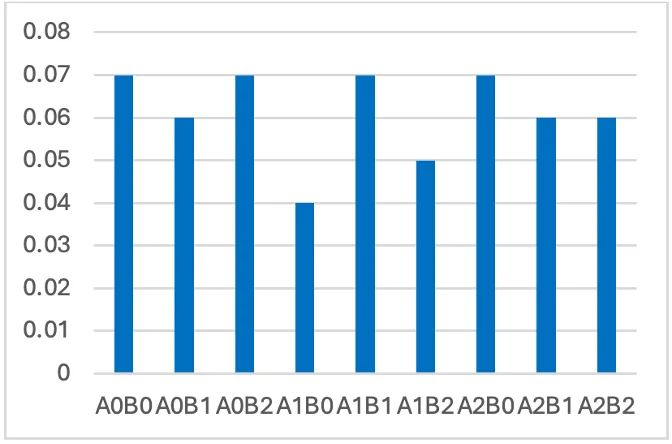
Figure 6. Dry weight of Plants
Table 10. Analysis of Variance (ANOVA) Results for Dry Weight of Sandalwood Seeds (Santalum album Linn.)

The data were analysed using ANOVA, as shown in Table 10. The calculated F-value was 1.889, with a significance level of 0.125, indicating no significant differences in dry weight across treatments. Despite this, the data were further analysed using Duncan’s Multiple Range Test (DMRT) to explore potential trends among treatments.
Table 11. Average Dry Weight of Sandalwood Plants (Santalum album Linn.)

Note: Means followed by the same letters within the column are not significantly different according to Duncan’s test
Based on Table 11, the treatment A1B1 (small seed size + chicken manure) exhibited the highest average dry weight of 0.07 g, whereas the lowest average dry weight was observed in treatment A1B0 (small seed size + soil and sand) with a value of 0.04 g. The significant difference between A1B1 and A1B0 is attributed to the addition of nutrients from chicken manure. Hanafiah (2012) explained that organic fertilisers physically improve soil structure, making it crumbly and allowing roots to develop freely and absorb micro-nutrients, even in small amounts. Biologically, chicken manure enhances microbial activity in the soil, thereby increasing soil fertility.
Gardner et al. (1991), as cited in Haryadi et al. (2015), noted that adequate mineral nutrition enables leaves to perform their photosynthetic function effectively. Improved plant growth resulting from sufficient nutrition ultimately leads to an increase in plant biomass (Yama & Kartiko, 2020). Although treatments A1B1 and A0B0 both achieved the highest average dry weight, the benefits of organic fertiliser, particularly chicken manure, are evident in their role in improving soil structure, nutrient availability, and biological activity, which all contribute to enhanced plant growth.
4. Conclusion
The combination treatment of manure and sandalwood seeds of different sizes significantly affected germination capacity, germination speed index, germination value, wet weight and dry weight of the plant.
The combination treatment of chicken manure and small sized sandalwood seeds produced the best germination of sandalwood seeds. In contrast, the combination treatment of small sized seeds with just a mixture of soil and sand without using manure produced the lowest germination of sandalwood seeds. This has a very real influence on germination capacity, germination speed index, germination value, wet weight and dry weight of the plant.
5. Author Contributions
The authors declare no conflict of interest in the preparation of this manuscript.
6. Competing Interests
The authors declare that there is no conflict of interest in writing this paper.
7. Acknowledgements
The authors express their gratitude to all colleagues who assisted in the publication of this work and to the staff of the Fatukoa Permanent Nursery for their support during the research.
8. References
Abel, G., Suntari, R., & Citraresmini, A. (2021). Pengaruh biochar sekam padi dan kompos terhadap C-organik, N-total, C/N tanah serapan N dan pertumbuhan tanaman jagung di ultisol. Jurnal Tanah dan Sumberdaya Lahan, 8(2), 451–460. https://doi.org/10.21776/ub.jtsl.2021.008.2.16
Anonim. (2007). Tomat budidaya dan analisis usaha tani.
Hanafiah, K. A. (2012). Dasar-dasar ilmu tanah. Hartatik, W., & Widowati, L. R. (2010). Pupuk organik dan pupuk hayati. http://www.balittanah.litbang.deptan.go.id
Jayadi, M., Juita, N., & Wulansari, H. (2022). Analisis fosfor tanah pada lahan sawah irigasi dan sawah tadah hujan di Kecamatan Duampanua Kabupaten Pinrang. Ecosolum, 11(2), 191–207. https://doi.org/10.20956/ecosolum.v11i2.24460
Oktavianti, A., Izzati, M., & Parman, S. (2017). Pengaruh pupuk kandang dan NPK Mutiara terhadap pertumbuhan dan produksi kacang panjang (Vigna sinensis L.) pada tanah berpasir. Buletin Anatomi dan Fisiologi, 2(2), 236. https://doi.org/10.14710/baf.2.2.2017.236-241
Perangin-Angin, W. K., Juanara, E., Imaduddin, I. S., Angelina, C. L., Rahartomo, A., Anripa, N., Trisna, B. A., Naufal, N., Zulfan, J., Wardani, N. W., Ardian, M. N., Rahman, F. C., Utomo, V. A., Haryanto, B. F. A., Simanjuntak, H. E. V., Rachmana, P., Antoridi, H. M., Tedjakesuma, B., Putri, N. A., & Najih, M. I. (2024). Meretas jalan menuju energi terbarukan. Samudra Biru. https://books.google.co.uk/books?id=F28wEQAAQBAJ
Purnamasari, I., Sanjaya, R. I., Rachman, F., Priyono, B. S. E., & Wijayanto, Y. W. (2024). Kajian distribusi C-organik dan kadar air tahan di lahan kopi robusta Kabupaten Jember dengan noteinggian berbeda pada akhir musim penghujan. Jurnal Tanah dan Sumberdaya Lahan, 11(1), 135–142. https://doi.org/10.21776/ub.jtsl.2024.011.1.15
Sari, V. I., & Fasta, R. (2021). Pemberian berbagai bahan organik sebagai media tanam untuk pertumbuhan tanaman bayam (Amaranthus tricolor L.). Agrosintesa: Jurnal Ilmu Budidaya Pertanian, 3(2), 38. https://doi.org/10.33603/jas.v3i2.4439
Surata, I. K. (2006). Teknik budidaya cendana.
Wirayanta, W. (2003). Bertanam cabai hibrida secara intensif. Jurnal Agromedia Pustaka.
Yulianti, Y. B., Nurheni , N. W., Iskandar, I. Z. S., & Darma, I. T. D. (2016). The Variability of Seed Viability and Seed Vigour of Mindi (Melia azedarachlinn.) from Several Populations in The Community Forest of West Java. Jurnal Wasian, 3(2), 69-78. https://doi.org/10.62142/sfztgn12
Copyright (c) 2024 Jurnal Wasian

This work is licensed under a Creative Commons Attribution 4.0 International License.
Copyright and License
All articles published in Wasian Journal are the property of the authors. By submitting an article to Wasian Journal, authors agree to the following terms:
-
Copyright Ownership: The author(s) retain copyright and full publishing rights without restrictions. Authors grant the journal the right to publish the work first and to distribute it as open access under a Creative Commons Attribution 4.0 International License (CC BY 4.0).
-
Licensing: Articles published in Wasian Journal are licensed under a Creative Commons Attribution 4.0 International License (CC BY 4.0). This license allows others to share, copy, and redistribute the material in any medium or format, and adapt, remix, transform, and build upon the material for any purpose, even commercially, provided that proper credit is given to the original author(s) and the source of the material

This work is licensed under a Creative Commons Attribution 4.0 International License. -
Author's Rights: Authors are permitted and encouraged to post their work online (e.g., in institutional repositories or on their website) prior to and during the submission process, as it can lead to productive exchanges and greater citation of published work.
-
Third-Party Content: If your article contains material (e.g., images, tables, or figures) for which you do not hold copyright, you must obtain permission from the copyright holder to use the material in your article. This permission must include the right for you to grant the journal the rights described above.
-
Reprints and Distribution: Authors have the right to distribute the final published version of their work (e.g., post it to an institutional repository or publish it in a book), provided that the original publication in Wasian Journal is acknowledged.
For the reader you are free to:
- Share — copy and redistribute the material in any medium or format for any purpose, even commercially.
- Adapt — remix, transform, and build upon the material for any purpose, even commercially.
- The licensor cannot revoke these freedoms as long as you follow the license terms.
Under the following terms:
- Attribution — You must give appropriate credit , provide a link to the license, and indicate if changes were made . You may do so in any reasonable manner, but not in any way that suggests the licensor endorses you or your use.
- No additional restrictions — You may not apply legal terms or technological measures that legally restrict others from doing anything the license permits.
Notices:
You do not have to comply with the license for elements of the material in the public domain or where your use is permitted by an applicable exception or limitation .
No warranties are given. The license may not give you all of the permissions necessary for your intended use. For example, other rights such as publicity, privacy, or moral rightsmay limit how you use the material.
Most read articles by the same author(s)
- Elfrida Kastila Ine Tiga, Lusia Sulo Marimpan, Astin Elise Mau, Nixon Rammang, Assessing Agroforestry Impact on Household Income: A Study of the Bu’u Bei Community Forest (HKm) in Tina Bani Village, Ende, Indonesia , Jurnal Wasian: Vol. 11 No. 2 (2024): December

